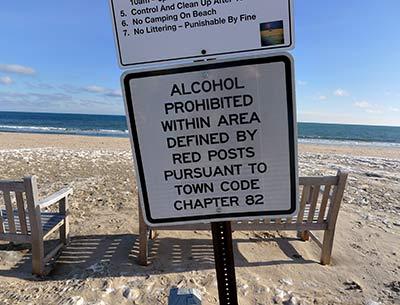Climate Lobby Comes East
Climate Lobby Comes East
Citizens Climate Lobby, an organization working to address climate change by advocating a shift from polluting energy to clean, renewable sources, is coming to the South Fork.
The organization advocates the phased-in imposition of a fee on fossil fuels that would be collected by the United States Treasury Department, placed into a trust fund, and rebated in full to households. A fee that assesses the “true social costs” of fossil fuels, proponents say, would drive a transition to a domestic-energy economy and stimulate investment in alternative-energy technologies while providing an incentive for businesses to use energy more efficiently.
Don Matheson, a builder who designed and built the net-zero energy house in East Hampton where he and his wife live, is a member of C.C.L. as well as the East End Climate Action network, a loosely organized activist group based in Sag Harbor. Two weeks ago, he contacted members of the latter group and others to announce the formation of an Eastern Long Island chapter of C.C.L. Interested persons will meet with Ashley Hunt-Martorano, a national representative of the group, on March 21 at a location to be announced.
Citizens Climate Lobby, said Mr. Matheson, is “eager to get as many chapters as they can, so they’re encouraging me to get something going out here.” Also, he said, the long drive to Patchogue — in his electric car — to an existing chapter “makes it harder for me to participate.” The group aims to establish a chapter in every Congressional district in the country and pursues a nonconfrontational strategy.
“It’s to try to develop a relationship over time” with one’s member of Congress, he said, “and try to sell them on our idea that this is a bipartisan, market-based solution. It does not grow government.” Mr. Matheson called a meeting with Representative Lee Zeldin earlier this month “a good beginning.” Mr. Zeldin, he said, “complimented us on our style and presentation. We expect to have another meeting in the next month or so in his D.C. office.”
Ms. Hunt-Martorano, who had been a volunteer with the organization for the past three years, accepted a full-time position that will begin on Monday. In addition to organizing its June conference and lobbying effort, she will lead the “group start workshop” to organize the eastern Long Island chapter. The workshop trains new volunteers “how to be the most effective climate advocates,” said Ms. Hunt-Martorano, who was previously the program director of Renewable Energy Long Island, a not-for-profit organization based in East Hampton.
“When we start these workshops, we usually see passionate individuals who desperately want to make a bigger impact but don’t know how. Many times, these folks are cynical about our federal government, and rightly so. These past few years Congress has refused to work for the people. However, we at C.C.L. believe that is not a reason to disengage. In fact, we believe it is a reason that we should become more involved.”
Politicians respond to political will, she said, “so at the group start workshop, we begin inspiring and motivating new volunteers to create political will for climate action in their communities.”
The organization will succeed where other environmental advocates have not, Ms. Hunt-Martorano said, “because we start from a place of appreciation and gratitude for all our members of Congress. We know this is going to take time and trusting relationships to pass.” Many members of Congress, she said, have been surprised and appreciative of the volunteers’ approach.
“Despite my tendency toward pessimism,” Mr. Matheson wrote in his email to like-minded residents, his association with Citizens Climate Lobby “has actually given me hope. They embody a rare combination: a powerful moral sense of our obligation to do what it takes to turn the tide on climate change, along with a cold-blooded and realistic understanding, based on experience, of how to turn the knobs that control our government.”

